What Happened to Club Cookware?
For a time, Club cookware was all the rage. Many rushed out to buy sets of these pots and pans, thinking they would be the key to making perfect meals every time. However, when was the last time you cooked with club cookware? If you can’t remember, you’re not alone.
Club cookware was once a popular choice for home cooks, but it seems to have fallen out of favor in recent years. But what happened to club cookware? Why is it no longer popular? And is there still a place for it in the modern kitchen?
In this blog post, we’ll look at the history of club cookware and explore why it’s fallen out of favor. We’ll also explore some of the pros and cons of using club cookware and provide tips on getting the most out of your set. Also, discuss alternatives to club cookware that might better fit your cooking needs. So read on for all you need to know about the question “what happened to club cookware?“!
See more: Where is Calphalon Cookware Made?
- What is Club Cookware?
- The History of Club Cookware
- What Happened to Club Cookware?
- What are Some Alternatives to Club Cookware?
- FAQs
- What are the Advantages of Club Cookware?
- Where to Buy Club Cookware
- How to Clean Club Cookware
- What is the Best Way to Store Club Cookware?
- How Long Will Club Cookware Last?
- What to Do With Old Club Cookware?
- Do I Need to Season My Club Cookware?
- Can I Use Club Cookware on an Induction Cooktop?
- Are Club Pots and Pans Dishwasher Safe?
- Conclusion
What is Club Cookware?
Club aluminum cookware was introduced nearly 100 years ago, but it’s still cutting edge. It also brought a new way of making and selling pots made with this material – an excellent heat conductor that keeps your food warm even if you leave them for hours on end without touching them! And unlike cast iron or stainless steel (both bad investments), these pans can come complete with wooden handles, so they’re perfect in look and touch.
Club cookware was originally designed for use in clubs and restaurants. However, it quickly became popular with home cooks as well. Many people loved the nonstick surface and the bright colors.
Club Cookware is a type of cooking set that was popular in the 70s and 80s. It has been around since before most people were born. However, its popularity waned during this period because it could be seen as old-fashioned or even dangerous due to chemicals used at one point when coating aluminum with nonstick coatings like scores on knives was made by adding salt water into terry cloths then rubbing them together until they achieved desired consistency before finally applying same technique onto metal.
The pots & pans often feature brightly colored plastic handles–something resembling something you would find at your local gym membership site today rather than what we see on most restaurant property managers’ shelves these days (don’t worry, though; some restaurants still offer this type of set).
The original Club aluminum cookware was made of heavy gauge aluminum and was coated with a nonstick finish. The pots and pans came in various colors, including red, green, blue, and yellow. They were also available in different sizes to accommodate different needs. Over time, the company changed its name to Club Cookware, and the product line expanded to include electric skillets, slow cookers, pressure cookers, and more.
While Club aluminum cookware was originally designed for clubs and restaurants, it quickly became popular with home cooks. Many people loved the nonstick surface and the bright colors.
The History of Club Cookware
To be able to know what happened to Club cookware, I will first tell you what Club cookware has achieved in history.
Club Aluminum was first sold in shops before Tupperware, Avon, and Pampered Chef parties. It all began with the Club Utensil Company, founded by Charles Lachman back when he lived in Chicago’s near North Side area, where there were no grocery stores around, so people would buy cooking oil at local hardware stores or hardware Institutes that had outlets right next door!
Lachman’s big break came when he was asked to design a set of cooking utensils for the exclusive woman’s Club in Chicago – The Woman’s Athletic Club. He created a line of pots and pans that were both stylish and functional, and the women loved them.
Lachman quickly realized there was a market for his cookware outside the Club, and he began selling sets of his pots and pans door-to-door. He soon had a thriving business, and Club aluminum cookware became one of the most popular brands of cookware in the country.
It was not until the 1920s that aluminum cookware became popular. This was when Club Aluminum began, and through 1933 it remained active despite economic hardships during The Depression, which made such parties too expensive for many people’s budgets or lifestyles at all times, depending on what they could afford – but this didn’t stop them!
New leadership coming in from 2003 onwards would change everything by introducing their Four-Way Test- a set of guidelines meant to ensure good health through food preparation practices: brush your teeth before you eat; use starches only when necessary (no sugars), overlapping vegetables whenever possible, etc. This list discusses how these steps can help ensure everyone gets plenty of nutrients while still having fun cooking.
Herbert Taylor, the new leader of Club Products Standard International (a company that had gone bankrupt in 1933), put his four-way test on what he wanted for this business venture. This philosophy is still used today by Rotary Clubs worldwide, and it’s an integral part when deciding how to act towards others, whether they’re members or not.
The Club aluminum cookbook from 1925 boasts that its new technology is “the first entire kitchen equipment of processed hardened, scientifically constructed with tight-fitting covers.” It also says these pots and pans are built to last a lifetime because they’re made out of strong enough metal for even cooking. The book has a lot of tips, including how to make sure your food doesn’t stick and how to clean the pots (hint: don’t use soap).
In the early 1900s, aluminum cookware was a revolutionary product that helped to change how people cooked at home. This new type of cooking eliminated the water from recipes. Instead, it replaced it with steam for dishes to look better and be healthier because nutrients would stay inside where they were needed most – rather than escaping into your kitchen sink or bathroom vanity mirror as is often seen today when we use traditional stainless steel pots/pans!
Trademark’s new cooking style introduced a healthy way to prepare food without the need for water. This was because the cover helped seal in moisture, meaning that vitamins and nutrients would not escape through steam like they do when using other types or methods- which made these pots more effective than others on account o their higher-quality ingredients!
This introduced a new style of cooking and healthier food options for the home with Club Alumunium’s cookware! The company sold it directly through health lectures or by selling “directly on party plans,” as they say within their book about how this changed history forever since essential nutrients weren’t escaping anymore due to steaming happening during preparation now.
By the end of the 20th century, Club Aluminium products were no longer being made. The brand’s heyday came during a colorful mid-century modern era with round designs typically associated with that period (1939 – 59). Today it is owned by Mirro and continues its legacy in aluminum cookware production.
If you’re looking for pots and pans that will last a lifetime, consider Club aluminum cookware. Even though the company is no longer in business, there are still many sets of these pots and pans that are being used today. Just be sure to avoid the Teflon-coated pans, as they can be dangerous.
While Club Aluminum cookware is no longer being produced, you can find sets of it online or at antique stores. Be sure to check the condition of the pots and pans before you purchase them, as some of the older sets may have been damaged or may not be safe to use. But if you can find a set in good condition, you’ll have a piece of history in your kitchen that will last for years.
It is the process of Club cookware in history, next we will go into the details of what happened to Club cookware, read to know a phenomenon of the past that has collapsed for what reason?
See more: Club cast aluminum still made?
What Happened to Club Cookware?
So what happened to club cookware? It’s still around but not as popular as it used to be. The company went out of business in the early 2000s, but there are still many people who remember Club aluminum cookware fondly. There are even some sets that are collector’s items. So if you’re looking for a set of pots and pans that will last a lifetime, consider Club aluminum cookware.
Even though the company is no longer in business, there are still many sets of these pots and pans that are being used today. Just be sure to avoid the Teflon-coated pans, as they can be dangerous. You can find sets of Club Aluminum cookware online or at antique stores. Be sure to check the condition of the pots and pans before you purchase them, as some of the older sets may have been damaged or may not be safe to use. But if you can find a set in good condition, you’ll have a piece of history in your kitchen that will last for years.
But why is club cookware no longer as popular as it once was? As time passed, other companies began to produce aluminum cookware, and the market became saturated. Club aluminum cookware was no longer the only game in town, and sales began to decline. To stay competitive, the company began producing a line of nonstick cookware in the 1970s. This new line of cookware was made with Teflon, a new nonstick coating that was supposed to be better than anything else on the market.
However, Teflon turned out to be a disaster for the company. The nonstick coating would flake off the pans and into the food, causing people to get sick. As a result, several lawsuits were filed against the company, and Club aluminum cookware was forced to recall its Teflon-coated pans.
The company never fully recovered from the Teflon scandal and eventually went out of business in the early 2000s.
Also, there are a few reasons based on many people’s comments.
Club Cookware is Expensive
One of the main reasons why club cookware is no longer as popular as it once was is that it’s simply too expensive for most people. Good quality club cookware can cost hundreds or even thousands of dollars. This is simply too much for most home cooks to spend on cookware.
Other aluminum cookware brands are just as good as Club but don’t cost nearly as much. This has made it hard for Club to compete in the market and has likely contributed to their decline in popularity.
Club Cookware is Difficult to Find
Another reason why club cookware is no longer as popular as it once was is because it’s simply difficult to find. The company went out of business in the early 2000s, so club cookware sets are getting harder and harder to find. You can still find them occasionally online or at antique stores, but they’re not easy to come by.
This lack of availability has made it difficult for people to get their hands on a set of club cookware and has likely contributed to the decline in popularity.
The Development of New Materials and Technologies
The development of new materials and technologies has also likely contributed to the decline in the popularity of club cookware. There are now many different types of cookware on the market made with new materials that are supposed to be better than aluminum. These new materials include stainless steel, ceramic, and even titanium.
People are often willing to spend more money on cookware made with these new materials because they believe that it will be of better quality and will last longer. But unfortunately, club aluminum cookware simply can’t compete with these newer materials, which has likely led to its decline in popularity.
Safety Concerns
In the past, there were some concerns about the safety of aluminum cookware, although these concerns have largely been debunked. However, when nonstick coatings started to contain harmful chemicals like PFOA and PFOS, people became warier about using them in their kitchens. As a result, sales of club cookware declined as people switched to safer options.
As mentioned earlier, the company was forced to recall its Teflon-coated pans in the 1970s after discovering that the nonstick coating was flaking off and getting into people’s food. This scandal led to many people being concerned about the safety of using aluminum cookware, which likely contributed to the decline in popularity of Club cookware.
Club Cookware is Difficult to Use
Unlike other types of cookware, such as nonstick or cast iron, club cookware requires extra care and attention. You need to be careful not to overheat the pan, or the food will stick. And you also need to be careful not to use metal utensils on the pan, as this can damage the surface.
This extra care and attention can be a bit of a hassle for busy home cooks, and it’s likely one of the reasons why club cookware is no longer as popular as it once was.
Club Cookware is Outdated
Finally, it’s simply outdated. Better and more modern options are now available, such as nonstick or ceramic cookware. These newer options are easier to use and clean, and they’re also more stylish. So it’s no wonder club cookware has fallen out of favor recently.
At the same time, newer kitchen appliances like slow cookers and electric pressure cookers made some of the functions of club cookware obsolete. That’s all you need to know about What Happened to Club Cookware. They are the factors that cause the failure of these cooking utensils.
What are Some Alternatives to Club Cookware?
Now you know everything that has happened to Club Cookware, do you want to find its alternatives? It is because the popularity of Club cookware is decreasing and not many people know about it anymore, so today there are much better choices for every home. There are always quality products from reputable manufacturers to make your meals more delicious. So, below we’ve rounded up a few of the best alternatives available in today’s cookware market.
If you’re looking at a quick comparison and don’t know which one to choose, check out our detailed reviews of the best products on the market. We have also provided you with considerations when you buy cookware for yourself and your family. So please refer to “Top 7 Best Non-Toxic Cookware”
Above is all we want you to know about what happened to club cookware. Unfortunately, a good brand collapses at the present time but is also true due to the newer technologies with the fake more than being born to replace Club Cookware to suit us more.
FAQs
Next, I will raise some related questions besides “What Happened to Club Cookware?”. Read to expand your knowledge, maybe someday you need to use them.
What are the Advantages of Club Cookware?
There are a few advantages of using club cookware:
It’s an excellent heat conductor. This means that your food will stay warm for longer periods.
It’s also very durable. A good quality club cookware can last for many years with proper care.
Club cookware is still stylish and can add a touch of elegance to your kitchen.
See more: Is Rachael Ray Cookware Safe?
Where to Buy Club Cookware
Club aluminum has become an all-encompassing term for vintage cooking gear. You can find these on eBay, Etsy, Pinterest, and in antique shops or online retailers specializing in old kitchen gadgets!
The trademark “club” patterned rings that decorate your pots & pans let you know with certainty this is the real deal – there’s no copycat material here; only high-quality original design made by people who love what they do best: making great-tasting food while showing off their creativity as well!
How to Clean Club Cookware
Although Club Cookware is no longer popular at the moment, I’m sure some families are still using it. Maybe they want to keep memories with these cooking utensils or for another reason, the use of an outdated cooking kit may occur some potential dangers. And to minimize them, maintenance is not to be missed. I will show you how to clean it, as the extended question of what happened to club cookware.
To keep them looking their best, it’s important to take care of the small details like cleaning bottleshrooms and other dirt that builds up on these pans, so food doesn’t stick anywhere! Simply wash your pan with warm soap, then rinse thoroughly when done – don’t forget about drying completely before storing away again; this could prevent rusting if left unchecked over time.
After cooking, it’s important to let your pots and pans cool completely before washing them. This will prevent any thermal shock that could crack or break the cookware.
Do not use harsh chemicals or scrubbers on your cookware, as this can damage the surface. Please contact the manufacturer if you have any questions about how to clean your cookware.
If you want to make sure your food doesn’t stick, it’s important to properly season your cookware before each use. This is especially true for cast iron skillets but can be applied to any cooking surface. To season your pan:
Heat it on the stove until it’s hot, then rub a small amount of oil into the surface using a paper towel or clean cloth.
If necessary, coat the entire area evenly, including the sides and handles.
Allow the pan to cool completely before storing or using it for cooking.
It’s also important not to use metal utensils on your cookware, as this can scratch the surface and cause food to stick more easily. Instead, opt for wooden or silicone utensils that won’t damage the pan and will help keep your food from sticking
By following these simple steps, you can ensure that your club cookware will last many years. So take care of your investment and enjoy cooking with high-quality pots and pans that will make mealtime a breeze.
What is the Best Way to Store Club Cookware?
Store your club cookware in a dry place whenever you’re not using it. The best way to store your club cookware is by hanging it on a pot rack or in an enclosed cabinet, so it does not get damaged from humidity. You can also wrap each item with plastic and keep them at room temperature if you don’t plan on using the pan for a while, but make sure they are cool before putting them away because hot temperatures will cause corrosion (which might affect performance).
Avoid storing the pots and pans next to water or other substances that could leach into them, like oil bottles; this will cause corrosion on metal surfaces if left unchecked! Be sure also never put anything else flammable near these items. At the same time, they wait their turn because there’s nothing more dangerous than volatile chemicals waiting for an excuse before blowing up – literally!
If you’re not planning on using your cookware for a long time, it’s a good idea to clean and season it before putting it away. This will help prevent rusting or other damage when metal is left unused for too long.
Avoid storing your cookware in damp or humid environments, as this can cause the surface to corrode. Please contact the manufacturer if you have any questions about how to store your cookware.
Avoid storing them next door or across the room as this may cause corrosion on any metal utensils that come into contact with their surfaces! If there are questions about how best to handle the storage of these items, please refer back to all inquiries regarding manufacturer recommendations before using them again in cooking.
Now that you know how to take care of your club cookware, it’s time to get cooking! These pans are perfect for anything from searing meats to sauteing vegetables, so get creative in the kitchen and show off your culinary skills. Delicious food awaits!
How Long Will Club Cookware Last?
Club cookware is built to last with proper care and cleaning. You may need to replace it after some use, but the longest any set has lasted was eight years! If you have questions about how long your current pans will last or if they are worth investing in new ones, then please contact their manufacturer directly because there’s no way for anyone else on this forum (or anywhere!) alone a bring out all possibilities involved when talking personal experience/stories around these types topics.
What to Do With Old Club Cookware?
When your club cookware shows signs of wear and tear, it’s time to start considering replacing it. However, you don’t have to get rid of your old cookware yet! There are many ways to repurpose or recycle your old pots and pans.
One option is to donate your old cookware to a local thrift store or charity. This is a great way to give back to the community and help someone in need.
Another option is to recycle your old cookware. When recycling old club cookware, the first step is cleaning the pots and pans thoroughly. You can do this by hand-washing them with soap and water or putting them in the dishwasher. Once they are clean, you will need to remove any food residue that might be stuck to the surface. This can be done by scrubbing the cookware with a kitchen sponge or a brush.
After the cookware is clean, it’s time to recycle it. Most cities have recycling programs for metal cookware, so check with your local government to see if they offer this service. Again, this is a great way to reduce waste and help the environment.
Also, you can check with your cookware manufacturer to see if they offer a recycling program. Many companies have programs to recycle old cookware, so this is worth investigating.
Finally, you can always sell your old club cookware online or at garage sales. This is a great way to make extra money and simultaneously eliminate your old pots and pans. Someone might be looking for the perfect set of club cookware to add to their collection!
As you can see, there are many options for what to do with old Club cookware. So, don’t throw it away just yet – repurpose or recycle it!
Do I Need to Season My Club Cookware?
Yes, it is important to season your club cookware. Seasoning involves coating the cookware with oil or fat, which creates a barrier between the metal and food. This helps to prevent sticking and rusting, and it also adds flavor to your food. Seasoning your cookware is easy and a great way to protect your investment.
To season your cookware, simply rub a thin layer of oil or fat onto the pan’s surface. You can use any oil or fat, but vegetable oil or lard works well. Once you have applied the oil or fat, heat the pan for about 10 minutes. This will help to set the seasoning.
After the pan has cooled, you can use it for cooking. Remember, it is important to season your cookware regularly, especially if you use it frequently. This will help to keep it in good condition and prevent rusting.
Can I Use Club Cookware on an Induction Cooktop?
Some small notes when using Club cookware will be one of the things you want to know. Once you have answered your questions about what happened to club cookware, I will also give what you need to know if you are still using this cookware.
You can use club cookware on an induction cooktop. Induction cooktops are becoming increasingly popular, offering many benefits over traditional gas or electric cooktops. However, not all cookware is compatible with induction cooktops.
Club cookware is made from a type of metal known as carbon steel. This metal type is ideal for an induction cooktop because it conducts heat well. Additionally, carbon steel is a durable material that can withstand high temperatures. So, if you are looking for new cookware on your induction cooktop, club cookware is a great option!
It is important to follow the manufacturer’s instructions when using club cookware on an induction cooktop. You will need to use a lower heat setting than traditional cookware. This is because carbon steel conducts heat more quickly than other materials. Additionally, you might need to use a bit more oil or fat when cooking with club cookware on an induction cooktop. This is because cookware can lose its nonstick properties at high temperatures.
Are Club Pots and Pans Dishwasher Safe?
No, club pots and pans are not dishwasher-safe. Club cookware is made from carbon steel, a metal that can rust. Rusting is more likely to occur if the cookware is put in the dishwasher. Additionally, the detergent and water used in the dishwasher can cause the cookware to lose its seasoning. For these reasons, washing club pans using soap and water is best.
If you decide to put your club pans in the dishwasher, dry them thoroughly after washing. You can also season the cookware again after washing it in the dishwasher. This will help to protect it from rust and keep it seasoned properly.
When washing club pans by hand, use a non-abrasive sponge or cloth. This will help to prevent scratching the surface of the cookware. Also, it is important to avoid using harsh cleaners or scrubbers, as these can damage the cookware.
That’s all we want to share with you about what happened to club cookware. If you have any questions or information you need to talk to us about, please leave a comment below.
Conclusion
When cleaning club cookware, it’s important to take the time to do it properly. This will ensure that your pans last for many years and continue to perform well. Be sure to wash them with warm soap and water, then dry them completely before storing them. You should also season your pans before each use and avoid using metal utensils that can scratch the surface. By taking these simple steps, you’ll be able to enjoy your Club cookware for many years.
There are many reasons why club cookware is no longer as popular as it once was. It’s simply too expensive for most people, difficult to find, and requires extra care and attention to use. Additionally, the development of new materials and technologies has made it outdated, and better and more modern options are now available. So if you’re in the market for new cookware to cook a meal, you might want to consider one of these newer options instead of club cookware.
Thank you for reading the article “what happened to club cookware?”! Don’t forget to check out the interesting articles on our website.
Anthony Michelin (March 26, 1960) is the CEO of Ryujinramenbrooklyn.com – is an expert in finding specialized equipment to assist in the Bar & Kitchen sector. With over 40 years of focus on finding the simplest recipes on the most suitable cookware to create the most delicious meals, I believe it will help you.
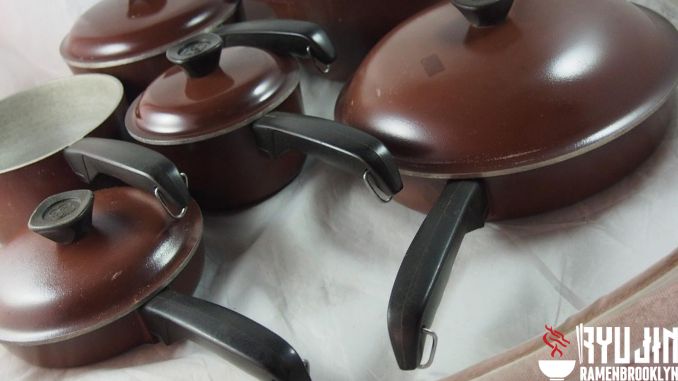
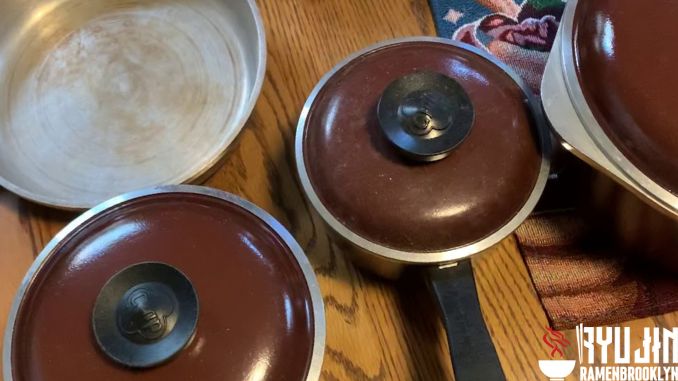
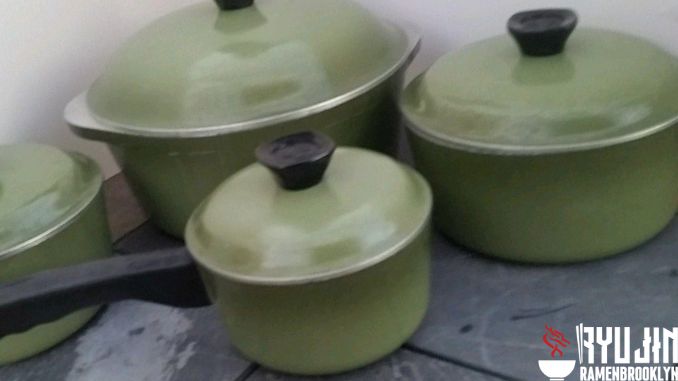
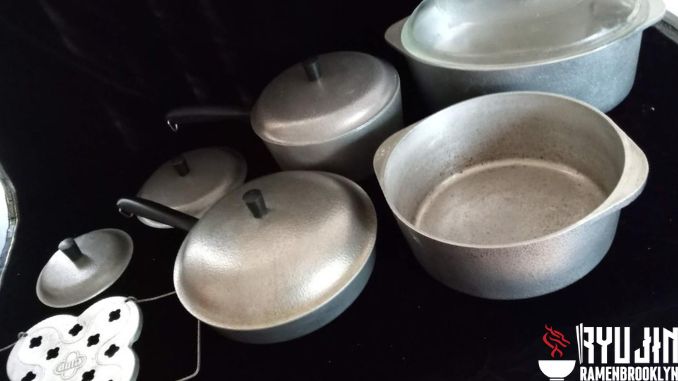
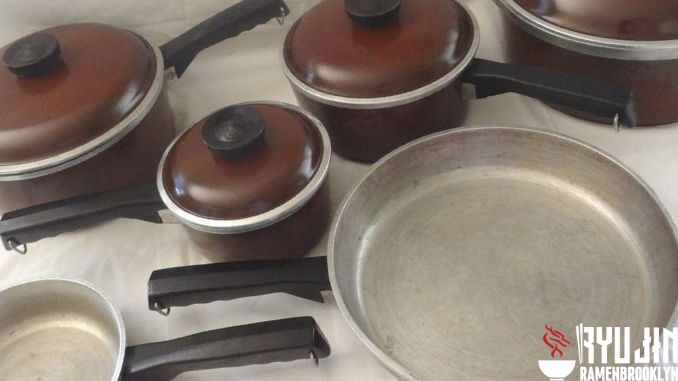
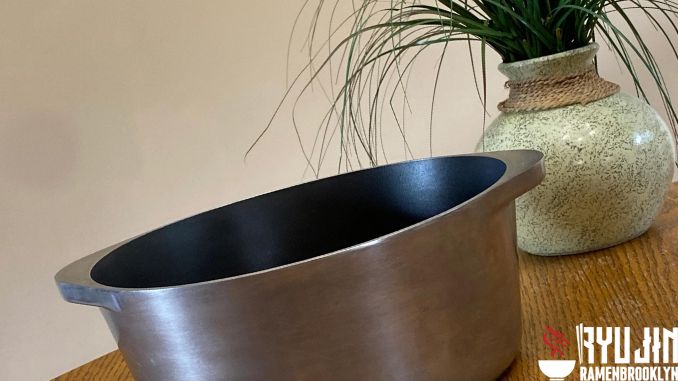
I need to have three quart club sauce pan recolored. It was turquoise. After years of grease baked on outside of pan, exterior is badly damaged. Where is a manufacture to contact if they can repaint or whatever to get outside colored again?
I have had my Club Cookware fir decades. And now I have recipes for putting my fry pan in the oven. I’d like to know if my 2-3″ deep 10″ fry pan is oven proof before I do so, and ruin it and / or start a fire.
My Club aluminum pot is white on the outside. It has brown stains from being used on a fire that was too large for the pot – a 2 qt saucepan. How can I remove the discoloration from the white outer part?
I have had my club pan for 30 years plus and it is still going strong !!
Thanks for your useful article. Other thing is that mesothelioma cancer is generally the result of the breathing of fibres from mesothelioma, which is a very toxic material. It’s commonly observed among employees in the structure industry who have long experience of asbestos. It’s also caused by living in asbestos covered buildings for an extended time of time, Genes plays a huge role, and some folks are more vulnerable on the risk than others.
Your articles are extremely helpful to me. Please provide more information!